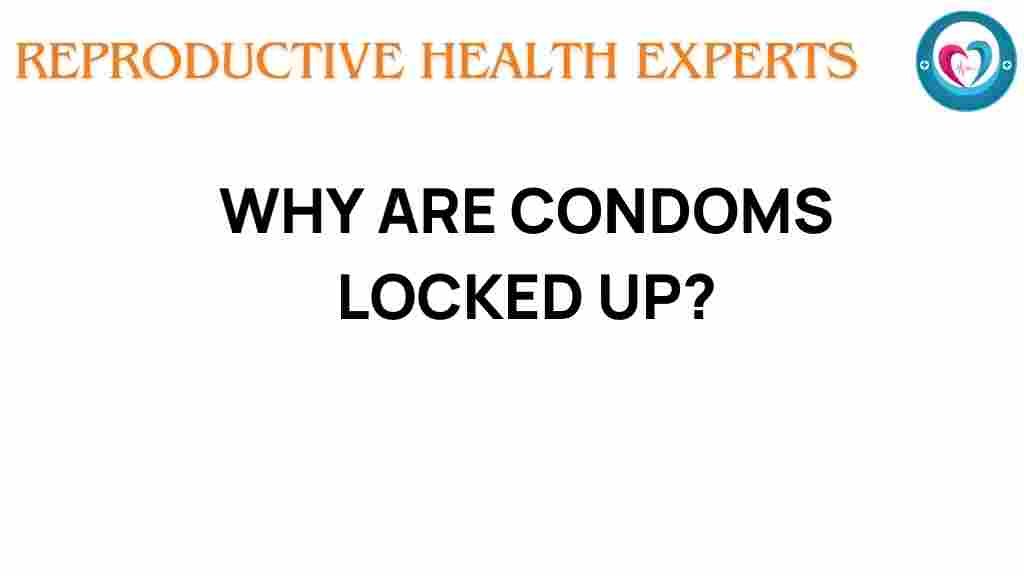The Hidden Reasons Why Condoms are Often Locked Away
Condoms are a vital tool in promoting sexual health and preventing sexually transmitted infections (STIs) and unintended pregnancies. However, despite their importance, condoms are often locked away in various public places, from schools and community centers to healthcare facilities. This article explores the hidden reasons behind this phenomenon, focusing on accessibility, public health, education, and the stigma surrounding sexual health. By understanding these factors, we can work towards improved accessibility and awareness of these essential safety tools.
Understanding the Importance of Accessibility
Accessibility to condoms is crucial for effective sexual health promotion. When condoms are easy to obtain, they can significantly contribute to preventing STIs and unintended pregnancies. However, many individuals face barriers that limit their access to these essential products. Here are some of the primary reasons why condoms are often locked away:
1. Stigma Surrounding Sexual Health
The stigma associated with purchasing or obtaining condoms can deter individuals from seeking them out. Many people feel uncomfortable discussing sexual health openly, which can lead to:
- Shame: Individuals may feel embarrassed about buying condoms, especially in public settings.
- Fear of Judgment: Concerns about being judged by others can prevent individuals from accessing condoms.
This stigma can lead to the perception that condoms are something to be hidden or locked away, rather than seen as a normal part of sexual health and safety.
2. Public Health Policies
In some regions, public health policies may dictate the availability of condoms. For example:
- Funding Limitations: Some organizations may lack the funding to provide free or easily accessible condoms.
- Age Restrictions: There may be regulations that restrict condom distribution to certain age groups, affecting accessibility for younger individuals.
These policies can inadvertently contribute to the lack of accessibility, making it more difficult for individuals to obtain condoms when needed.
3. Safety and Responsibility Concerns
Locking away condoms is often seen as a measure to ensure safety and responsibility. This stems from concerns such as:
- Theft: In some cases, organizations may fear that condoms will be stolen, leading them to restrict access.
- Misuse: There may be concerns about condoms being misused by minors or individuals who are not responsible enough to use them correctly.
While these concerns are valid, they can also hinder the overall accessibility of condoms, ultimately affecting public health efforts.
Steps to Improve Accessibility
To address the hidden reasons why condoms are often locked away, various steps can be taken to improve accessibility:
1. Enhance Education and Awareness
Improving education about sexual health can help reduce stigma and increase awareness. This can be achieved through:
- School Programs: Implement comprehensive sex education programs that discuss the importance of condoms and their correct usage.
- Community Workshops: Host workshops and informational sessions to educate the community on sexual health and resources available.
By fostering an environment of openness and understanding, individuals may feel more comfortable accessing condoms.
2. Increase Availability in Public Locations
Public health organizations can work to increase the availability of condoms in easily accessible locations, such as:
- Health Clinics: Ensure that condoms are readily available in clinics without restrictions.
- Community Centers: Provide free condom distribution at community events and centers.
Making condoms accessible in trusted environments can help normalize their use and encourage responsible sexual health practices.
3. Advocate for Policy Changes
Advocating for changes in public health policies can help improve accessibility. This includes:
- Funding for Programs: Lobby for increased funding for sexual health programs that provide free condoms.
- Removing Age Restrictions: Work towards policies that allow for the distribution of condoms to individuals of all ages.
These changes can create a more supportive environment for sexual health education and accessibility.
Troubleshooting Accessibility Issues
If you or someone you know is having difficulty accessing condoms, here are some troubleshooting tips to consider:
1. Explore Local Resources
Many communities offer resources for sexual health. Consider checking:
- Local health departments
- Planned Parenthood clinics
- Community health organizations
These resources often provide free condoms without any stigma attached.
2. Online Options
In today’s digital age, purchasing condoms online can be a discreet and convenient option. Look for:
- Reputable online pharmacies
- Subscription services that deliver condoms to your door
These options can provide a private way to access condoms without the fear of judgment.
3. Start the Conversation
Discussing sexual health with friends, family, or partners can help normalize the topic. Consider:
- Talking openly about the importance of condoms
- Encouraging friends to join in discussions about sexual health
Starting the conversation can help reduce stigma and promote awareness.
Conclusion: A Call for Change
Condoms play a critical role in promoting sexual health and preventing STIs and unintended pregnancies. The hidden reasons why they are often locked away stem from stigma, public health policies, and safety concerns. However, by enhancing education, increasing availability, and advocating for policy changes, we can improve accessibility to condoms and foster a culture of safety and responsibility.
It is essential to work together to break down the barriers that hinder access to these vital products. Everyone deserves the right to make informed choices about their sexual health without stigma or fear. For further information on sexual health resources, check out Planned Parenthood.
By raising awareness and prioritizing accessibility, we can contribute to a healthier and more informed society. Let’s encourage open dialogue and support initiatives that promote sexual health for all.
This article is in the category Prevention and created by ReproductiveHealthExperts Team
